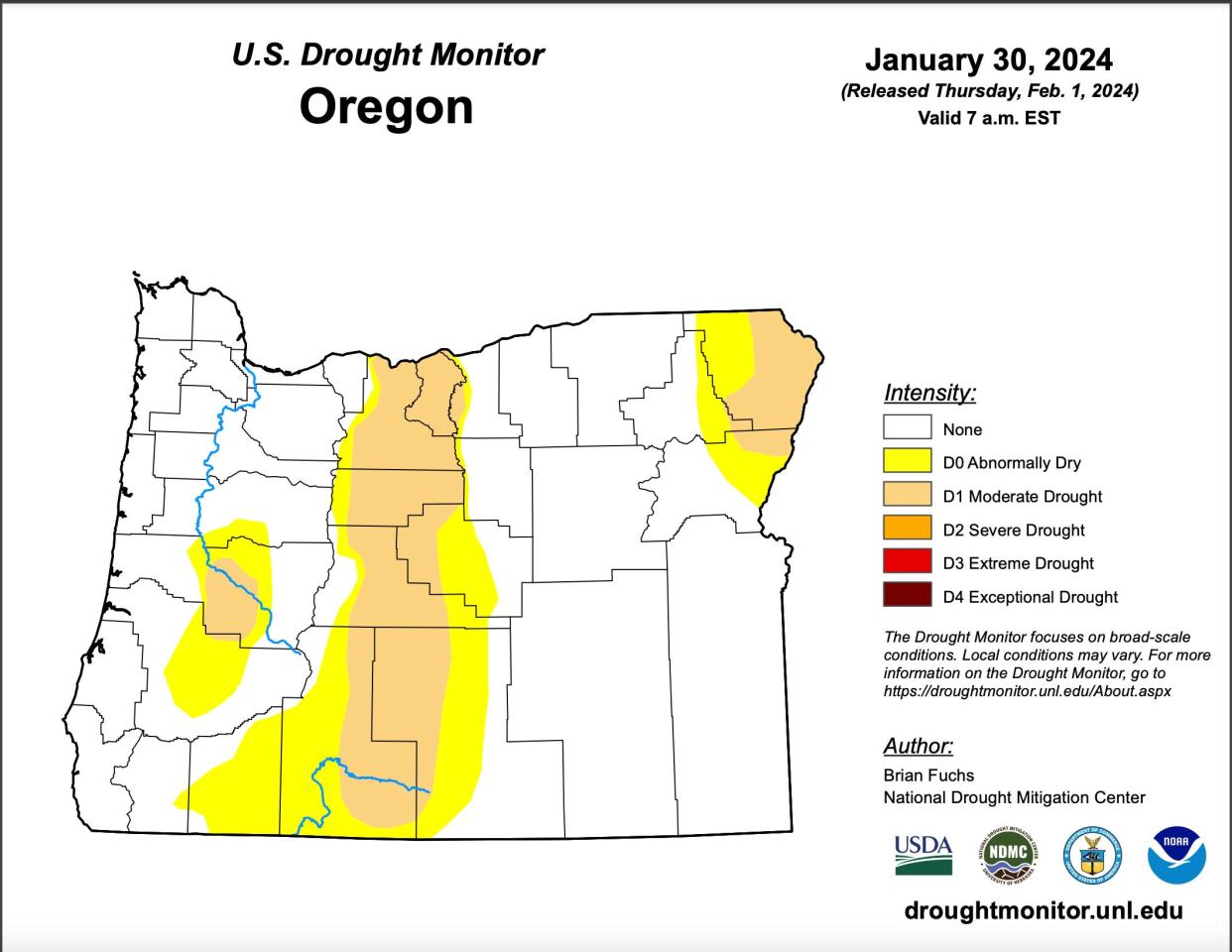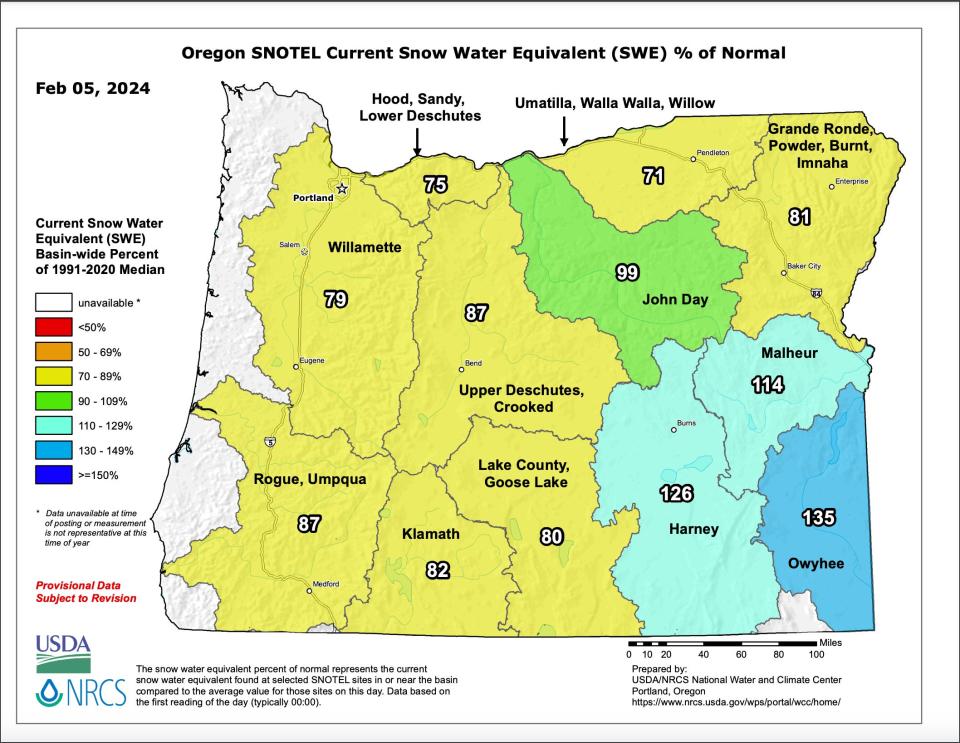Oregon most drought-free since 2019 following winter storms, but Eugene area still dry

After a wet December and January, Oregon is the most drought-free it has been since October of 2019, according to the U.S. Drought Monitor.
Western Oregon saw well above-average precipitation in January, getting between 9 to 11 inches of rain in the Willamette Valley and elsewhere from a parade of storms that also dumped snow in the mountains.
That boost helped Oregon recover from a hot and dry summer that placed wide swaths of the state into drought.
The Drought Monitor map, released Feb. 1, shows 32% of Oregon is considered abnormally dry and 16% is in moderate drought. That might not seem like cause for celebration, but a year ago, 83% of Oregon was abnormally dry, 64% was in moderate drought and 39% was in severe drought. The drought only expanded as the state moved into one of the hottest and driest summers on record.
The Drought Monitor map has five categories of dryness — from abnormally dry to exceptional drought. The levels are determined by measurements of precipitation, snowpack, soil moisture and other factors against historic norms.
Oregon has had large parts of the state in those categories continually since 2020 and much of the past decade.
The past few years, Oregon as a whole has been much hotter and a somewhat drier than normal. The last time the state was this saturated was October 2019, when 11% of the state was abnormally dry and 0% of the state was in any form of drought.
Most of NW Oregon drought-free, but Eugene and Lane County still behind
While much of Oregon is drought free, there is a pocket of drought remaining in the Eugene and Lane County area, along with a band of Central Oregon.
The persistence of the drought in the Eugene area can be explained by rainfall totals from last year and early this year.
In 2023, Eugene had its fifth driest year on record, with just 29 inches of precipitation compared to an average of 40.7. Even a very wet January hasn’t quite made up for it.
Interestingly, Salem and Eugene were much wetter in 2023 and the wet January was enough to push it out of any form of overarching dryness.
Signs of trouble, Oregon snowpack melting rapidly

Oregon climatologist Larry O’Neill said the drought-free classification may not last long across Oregon.
The state’s snowpack has been melting rapidly due to recent warm rain events and “the outlook for February looks conducive to further snowpack reductions,” he said.
Oregon would need to continue to grow its snowpack to reach a normal amount by early spring, and that doesn’t currently appear likely, he said.
“This may likely be the best the drought monitor will look for some time barring another round of winter storms, an outcome which the current forecasts and outlooks do not support,” O’Neill said.
Zach Urness has been an outdoors reporter in Oregon for 15 years and is host of the Explore Oregon Podcast. To support his work, subscribe to the Statesman Journal. He can be reached at zurness@StatesmanJournal.com or (503) 399-6801. Find him on Twitter at @ZachsORoutdoors.
This article originally appeared on Salem Statesman Journal: Oregon most drought-free since 2019 following winter storms

